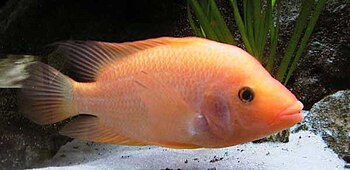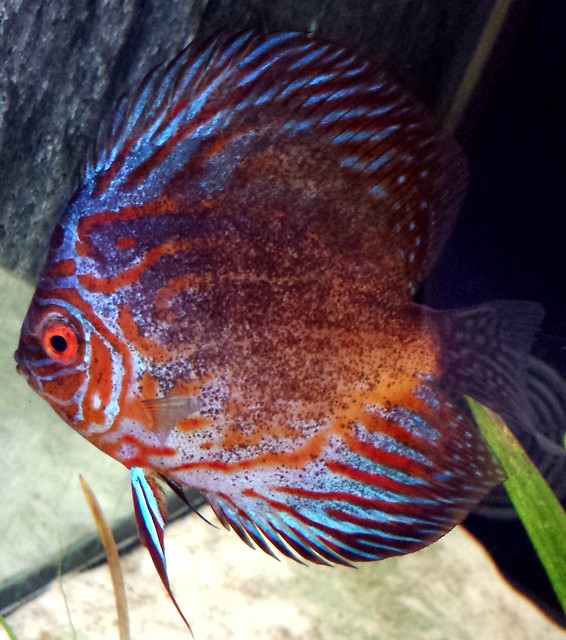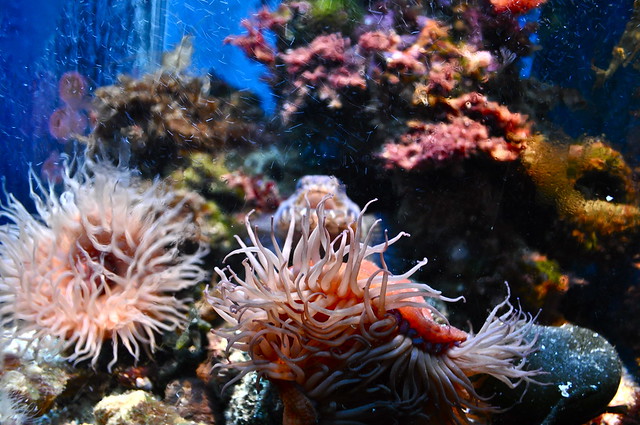There are so many tropical fish keepers in this hobby today that own or are looking to own the red devil cichlid. These fish hold a very special place in this wonderful hobby.
 |
| Amphilophus labiatum, female, in aquarium (Photo credit: Wikipedia) |
Red devil cichlids are often purchased from pet stores as a small 2-3 inch fish. Many people bring them home to their tank not knowing the personality of this Central American cichlid. This is the reason for this article. I would like to enlighten you on the unique personality of this awesome cichlid.
Red devil cichlids are extremely aggressive. Often, males will harass and chase females to the point of death. Many red devil owners choose to give this freshwater tropical fish it's own tank because of its hostility towards other fish.
One should be aware of this aggression if you plan to keep multiple fish in the aquarium tank. So many people get attached to this cichlid to only have it turn on them later and kill everything in the tank. If you choose to keep this tropical fish, you will not be disappointed because of their cool personality.
Red devil cichlids are territorial and they will protect what they claim as their part of the tank. This space will depend on each individual fish. Some claim a corner of the tank while others claim one-half to more than 75% of the tank. This cichlid will kill and often eat fish that can fit in their mouths. Do not keep this cichlid with any peaceful smaller fish. I would like for anyone that is interested in this cool cichlid to please be prepared to give it a tank of its own or be prepared to find another home for it later if you cannot handle the aggression. These fish make excellent wet pets and will do well in a tank to themselves.
The red devil cichlid is often known for jumping and leaving out of the water so ensure you have a tight lid or canopy on the tank. Provide plenty of cover and hiding spaces for this prized cichlid.
|






